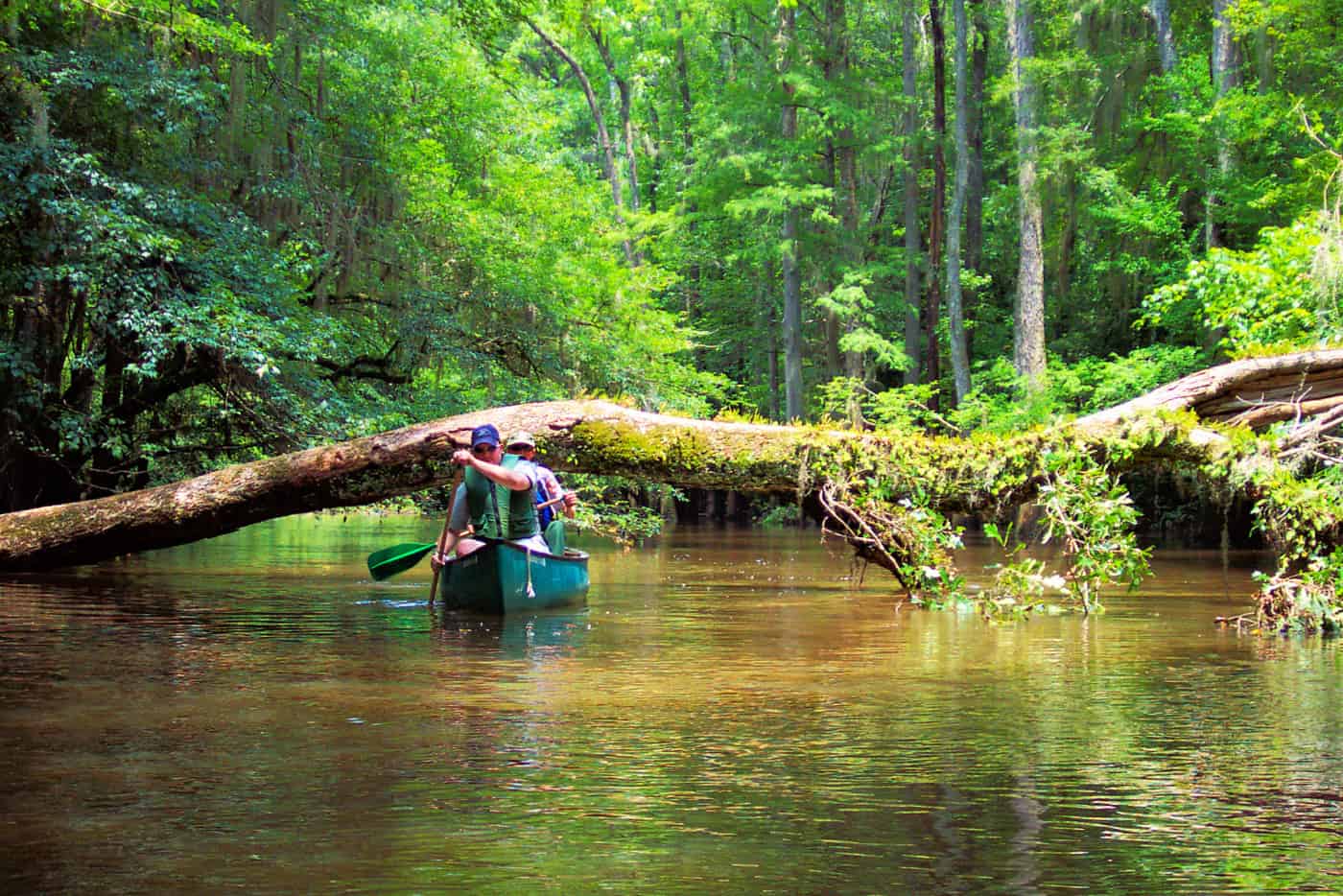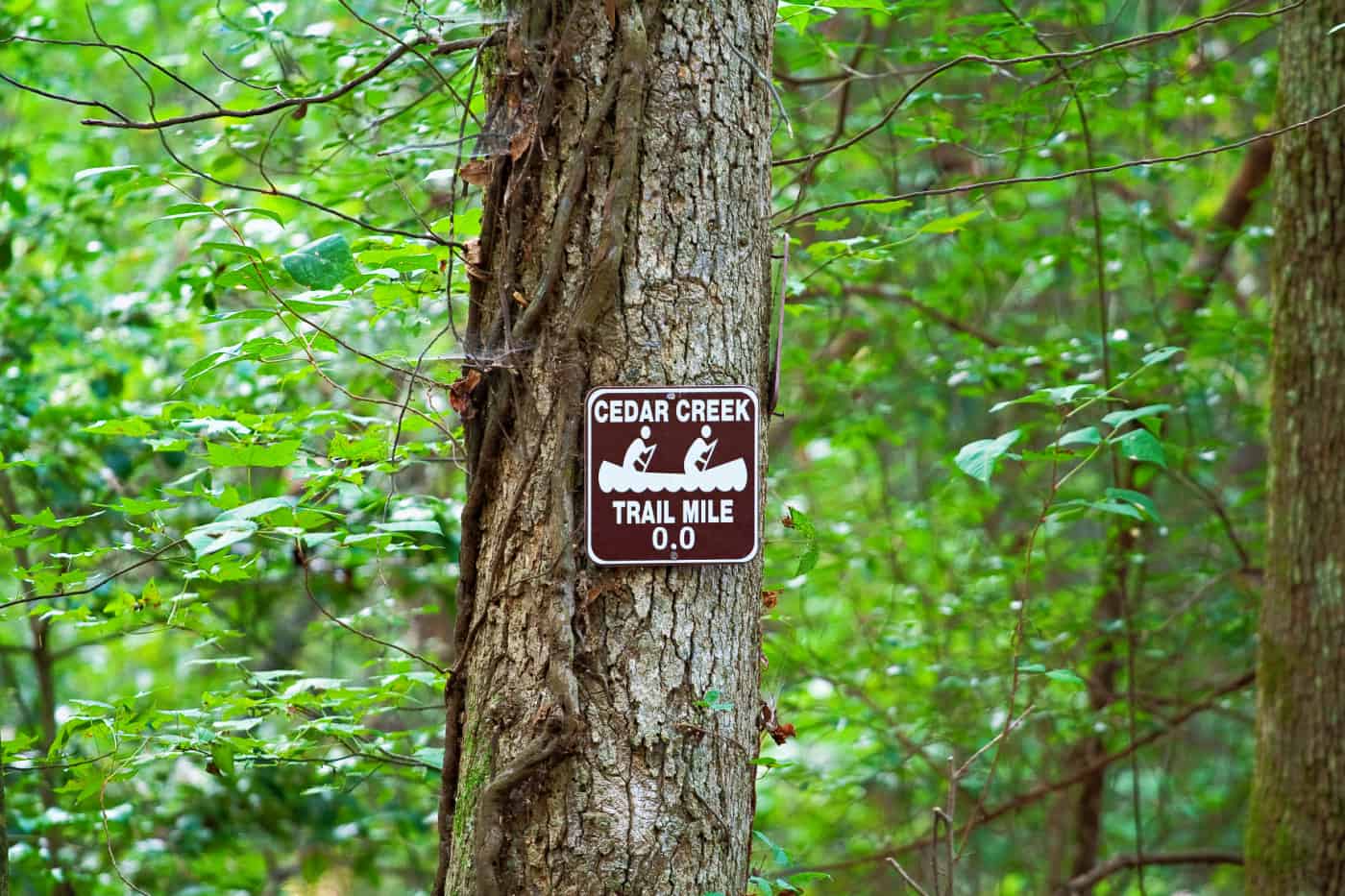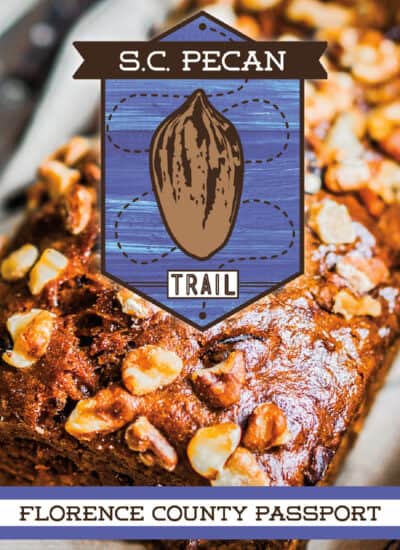Congaree National Park is a unique gem among America’s national parks. It’s lesser known, so it’s one of the least visited, but it has something no other park has. Here, you’ll find the largest tract of old-growth bottomland hardwood forest left in the United States, home to awe-inspiring ancient “champion trees.”
This dynamic 26,000-acre wetland ecosystem lies on the floodplain of the Congaree and Wateree Rivers, and visitors can explore the park by land or water.
Read Next: Which National Parks Require Reservations in 2024?

Where is Congaree National Park?
100 National Park Road, Hopkins, SC 29061
The park is open 24 hours. Visitor Center – open daily, 9-5 (except for some holidays). No admission fee.
Congaree National Park is located in the southeastern United States, in South Carolina. It’s approximately 20 miles from Columbia and about 150 miles from Charlotte, North Carolina.
Bonus: It’s one of the smaller, less crowded national parks and FREE.
Why is Congaree National Park Special?

The towering stands of old-growth trees make up the tallest deciduous forest in the United States. Some of these national and state champion trees are their species’ largest and tallest trees. There’s a 168-foot loblolly pine with a trunk circumference of 181 inches. Try hugging that!
Most of the nation’s hardwood forests fell victim to the lumber industry during the boom years, but logging was especially difficult in this area, so much of the forest survived. Decades later, when interest in logging the area resurfaced, grassroots and conservationist movements successfully led the park into protected status and ultimately into the national park wilderness it is today.
In 1976, it was designated Congaree Swamp National Monument, and in 2003, the monument’s boundary was expanded, and designated Congaree National Park.

What is the Best Time of Year to Visit Congaree National Park?
The best time to visit Congaree National Park is March through May and September through November when temperatures are mild and bugs aren’t as bothersome. The mosquitoes, heat, and humidity can be relentless in summer!
In the winter, frequent rain means water levels are at their highest, and flooding is a regular occurrence—the park floods multiple times a year—so many of the trails (including the boardwalk trails) may be submerged. Flooding may happen with little or no warning—even without rainfall—so always be prepared.
What Wildlife Can Be Seen at Congaree National Park?
The river floodplain ecosystem is home to wildlife such as owls, river otters, deer, snakes and other reptiles, spiders, insects, turtles, wild hogs, wild turkeys, and dozens of bird species, including the endangered red-cockaded woodpecker.
Start at the Harry Hampton Visitor Center

Not only is the visitor center staffed with knowledgeable park rangers, but there are also informational exhibits, maps, a gift shop, and restrooms. This is also where you can get your stamp for your National Parks Passport book.
There used to be a short film that played on a loop, but on my most recent visit, that wasn’t an option.
Pro Tip: Watch the video here.

Outside the park’s visitor center, you’ll find a board with the day’s current weather and park conditions. There’s also a mosquito meter—the wetlands environment is very mosquito-friendly. On my June visit, the scale pointed to mild, which we found was far from none. On my January visit, it was all clear.


Walk the Boardwalk Loop Trail
The easy Boardwalk Loop Trail is the most popular trail in Congaree National Park and gives a superb overview of the park’s ecosystem. Pick up a self-guided trail map from the visitor center, which details 20 numbered points of interest along the trail.
- Distance: 2.6 miles
- Type: Loop
- Rating: Easy
- Dog friendly? Yes
- ADA: Wheelchair accessible

The forest is full of bald cypresses and water tupelos, and if you have a hard time telling them apart (like I do), the knobby cypress “knees” poking up from the forest floor can help with identification.





Even when trees die, life continues around them. Snags are the perfect place for pileated woodpeckers to feast on insects.


Once a bend in the Congaree River, Weston Lake is now an oxbow lake, and there’s a nice scenic overlook along the trail.



From season to season, the landscape looks entirely different. On my June visit, I could see the forest floor, but in January, when the water levels were up, I couldn’t even make it around the loop trail.


Set aside one to two hours for a relaxed walk along the entire Boardwalk Trail, taking time to read the descriptions on the map. It’s a beautiful, tranquil place to forest bathe.

Other Trail Options

- Bluff Trail – Easy, 1.8 miles (This upland trail passes through a young forest of loblolly and longleaf pines.)
- Sims Trail – Easy, 3.2 miles (Follows an old gravel road and runs from the Bluff Trail to Cedar Creek.)
- Weston Lake Trail – Moderate, 4.5 miles (This trail provides excellent views of Cedar Creek, where it’s common to spot river otters and wading birds.)
- Oakridge Trail – Difficult, 7.1 miles (A number of large oak trees are along this old-growth forest trail. Deer and wild turkey are often in this area.)
- River Trail – Difficult, 11.1 miles (Trail leads to the Congaree River and through dense vegetation.)
- Kingsnake Trail – Difficult, 12 miles (This trail is a favorite for birders.)
- Bates Ferry Trail – Easy, 2.2 miles (This trail is on the park’s eastern side and follows a 1920s ferry road south to the Congaree River.)
- Longleaf Trail – Easy, 1.3 miles each way (A connector trail to Longleaf Campground)
- Fork Swamp Trail – Moderate, 0.6 miles (Runs along the southern arm of Bates Old River, an oxbow lake)
- Firefly Trail – Easy, 1.8 miles (This is where the synchronous fireflies light up in the spring.)
Congaree National Park Fireflies (Annual Spring Event)
There are a variety of firefly species in Congaree National Park, but it’s the synchronous fireflies that draw thousands of people to the park each year. The fireflies synchronize their flash patterns during their spring mating season—an extraordinary phenomenon.
The firefly event lasts about two weeks, starting mid-May, and park attendance is carefully regulated to protect the insects. The National Park Service runs an annual lottery system. once they’ve determined firefly viewing dates.

Explore Congaree National Park by Water

One of the best ways to see Congaree National Park is by kayak or canoe. Paddling the meandering waterways through the old-growth forest with its towering champion trees is magical and offers excellent wildlife viewing opportunities.
Currently, the park isn’t leading its own guided wilderness tours, but several outfitters can take you out or set you up with equipment.
If you venture out independently, follow the park’s canoe trail guidelines on water levels, what to bring, and what to expect.
The Cedar Creek Canoe Trail meanders about 15 miles through the Congaree Wilderness, from Bannister’s Bridge to the Congaree River. For experienced paddlers, the Congaree River Blue Trail travels 50 miles from Columbia, SC, to the confluence of the Congaree and Wateree Rivers at the Route 601 Landing.

Camping at Congaree National Park
The park offers backcountry and front-country camping options, allowing visitors to choose their level of wilderness immersion. Only tents and hammocks are permitted, no RVs or trailers. Reservations must be made through recreation.gov in advance, and camping guidelines must be followed. And remember, to leave no trace.
Backcountry Camping
For those seeking a more rugged adventure, backcountry camping permits are available, offering the chance to explore the park’s untamed wilderness by foot, canoe, or kayak. No designated campsites are in the backcountry, so campers may choose any location meeting park guidelines. Remember to Leave No Trace.
Frontcountry Camping
There are two frontcountry campgrounds in Congaree National Park, offering convenient amenities.
- The Longleaf Campground offers walk-up campsites with running water, vault toilets, a fire pit, and a picnic table. The campground is a short drive from the visitor center.
- The Bluff Campground is a hike-in campground with six sites, each having a firepit and picnic table. Restrooms are at the visitor center or Longleaf Campground. Water is available at the visitor center.

Other Things to Do at Congaree National Park
Consider timing your visit with one of the ongoing ranger-led programs offered by the park. Examples include the following:
- Owl Prowl
- Woodpecker Walk
- Big Tree Hike
- Nature Discovery Walk
- Fall Forest Wellness Journaling
Where to Stay Near Congaree National Park
For non-campers, there are plenty of hotels in nearby Columbia, SC.
- I stayed at the Hampton Inn – Columbia Southeast-Ft Jackson on my most recent visit. (Check Rates and Dates) – This hotel was just 20 minutes from the park entrance.
- I’ve also stayed at Hyatt Place – Columbia Downtown (Check Rates and Dates) – This hotel is about 30 minutes from CNP.
- Tru By Hilton – Orangeburg (Check Rates and Dates) – 20 minutes
- SpringHill Suites – Ft Jackson (Check Rates and Dates) – 20 minutes
- Home2 Suites – Ft Jackson (Check Rates and Dates) – 20 minutes










Leave A Reply!